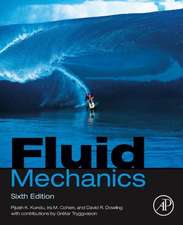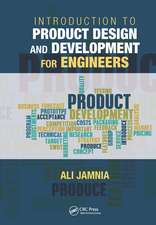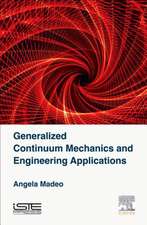Material Modeling with the Visco-Plastic Self-Consistent (VPSC) Approach: Theory and Practical Applications: Elsevier Series on Plasticity of Materials
Autor Carlos N. Tome, Ricardo A. Lebensohnen Limba Engleză Paperback – 26 mai 2023
It accounts for hardening, reorientation and shape change of individual grains, and can be applied to the deformation of metals, inter-metallics and geologic aggregates. Readers will have access to a companion website where they can download code and modify its input/output or add subroutines covering specific simulation research needs.
- Highlights a modeling approach that allows readers to accurately predict stress-strain response, texture evolution of aggregates, and internal stress states inside grains while also accounting for hardening, reorientation and shape change of individual grains
- Features modeling techniques that can be applied to the deformation of metals, inter-metallics and geologic aggregates
- Covers the theoretical aspects of homogeneous effective medium models as they apply to the simulation of plasticity and elasticity
- Provides several practical examples and applications of materials of different symmetry subjected to different deformation conditions
Preț: 1243.90 lei
Preț vechi: 1632.92 lei
-24% Nou
238.10€ • 258.71$ • 200.13£
Carte tipărită la comandă
Livrare economică 14-28 aprilie
Specificații
ISBN-10: 0128207132
Pagini: 380
Ilustrații: 80 illustrations (60 in full color)
Dimensiuni: 152 x 229 x 20 mm
Greutate: 0.61 kg
Editura: ELSEVIER SCIENCE
Seria Elsevier Series on Plasticity of Materials
Public țintă
Academic researchers in mechanical engineering, materials science; Professional engineers and material scientists Professors and students in these fieldsCuprins
1. Introduction
2. Theory and Models for Thermo-Elastic Effective Media
3. Theories and Models for Visco-Plastic Effective Media
4. Constitutive Models for Slip and Twinning
5. Description of Visco-Plastic Self-Consistent Code
6. Examples and Applications of Visco-Plastic Self-Consistent Code
Descriere
Material Modeling with the Visco-Plastic Self-Consistent (VPSC) Approach: Theory and Practical Applications provides readers with knowledge of material viscoplasticity and robust modeling approaches for predicting plastic deformation of crystal aggregates. Visco-Plastic Self-Consistent (VPSC) is the identifier of a computer code developed for the specific mechanical regime addressed (visco-plastic: VP) and the approach used (self-consistent: SC) meant to simulate large plastic deformation of aggregates, thermo-elastic material deformation, as well as predict stress-strain response, texture evolution of aggregates and stress-strain state inside grains. This approach is very versatile and able to tackle arbitrary material symmetry (cubic, hexagonal, trigonal, orthorhombic, triclinic), twinning, and multiphase aggregates.
It accounts for hardening, reorientation and shape change of individual grains, and can be applied to the deformation of metals, inter-metallics and geologic aggregates. Readers will have access to a companion website where they can download code and modify its input/output or add subroutines covering specific simulation research needs.
- Highlights a modeling approach that allows readers to accurately predict stress-strain response, texture evolution of aggregates, and internal stress states inside grains while also accounting for hardening, reorientation and shape change of individual grains
- Features modeling techniques that can be applied to the deformation of metals, inter-metallics and geologic aggregates
- Covers the theoretical aspects of homogeneous effective medium models as they apply to the simulation of plasticity and elasticity
- Provides several practical examples and applications of materials of different symmetry subjected to different deformation conditions


























